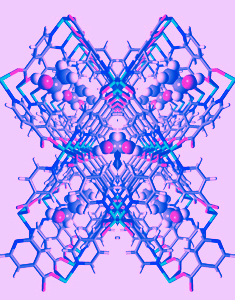Bug-killing metals tested
 A liquid metal treatment could be the next tool in the fight against antibiotic resistance.
A liquid metal treatment could be the next tool in the fight against antibiotic resistance.
Scientists from the US and Australia have developed a simple metallic coating treatment for bandages, medical devices and even drug treatments which are capable of resisting and killing bacteria.
The new approach involves testing ‘GaLM’ nanoscale liquid metal particles which have improved biocompatibility and low cytotoxicity to cells which could be applied as safe and effective antimicrobial agents.
“Gallium in its liquid state (or ‘GaLM’) is one of the most promising candidates to be used as an antimicrobial agent, and can be used in many ways as a liquid metal,” says Flinders University researcher Dr Vi Khanh Truong.
“The liquid state of GaLM enables it to be easily combined or functionalised with other components to create various forms of more efficient antimicrobial metals.
“As well gallium appears to be compatible with human cells in preparations and concentrations relevant to its antimicrobial activity, so could one day be administered orally or intravenous injection.
“This material’s antimicrobial performance would also be activated by external stimuli (light, magnetic fields, and heat as well as others), resulting in novel solutions which can outperform antimicrobial mono-metallic nanoparticles and may lead to the next generation of antimicrobial and anti-inflammatory metal-based agents.”
The research is the latest in an expanding field of metal-based antimicrobial strategies to combat escalating threats of antimicrobial resistance (AMR).
The current strategies for infection control that rely on conventional synthetic antibiotics are increasingly failing, and the treatment “toolbox” is rapidly becoming exhausted.
“To make matters worse, the ability of bacteria to evolve to resist antibiotics provides a disincentive for pharmaceutical companies to pursue next-generation target antibiotics,” Dr Truong says.
He said that the ACS Nano study examines how combining gallium with other elements “expands the realm of GaLMs with tunable features”.
“In contrast to solid-state particles, GaLM particles can dramatically transform their configurations in response to external stimuli. Interestingly, GaLMs in the liquid state can transform their shape around and inside cells,” he said.
“Moreover, in their liquid state, GaLMs can dissolve and sequester metallic elements that can later be released on demand via stimuli. This is especially useful for improving the efficiency of the release of drugs.
“Compared to solid metals, GaLMs appear to be benign for eukaryotes (indicating biocompatibility with human tissue) while retaining potent antimicrobial activity.
“It is important to highlight that the antimicrobial activity of GaLMs, in bulk and nano dimensions, is not limited to prokaryotes such as bacteria and cyanobacteria,” he adds.
“In addition, GaLMs offer anti-inflammatory properties and we also examined the role of phase behaviour and interfaces in nanoscale GaLMs on antibacterial properties.”
The full article is accessible here.








 Print
Print